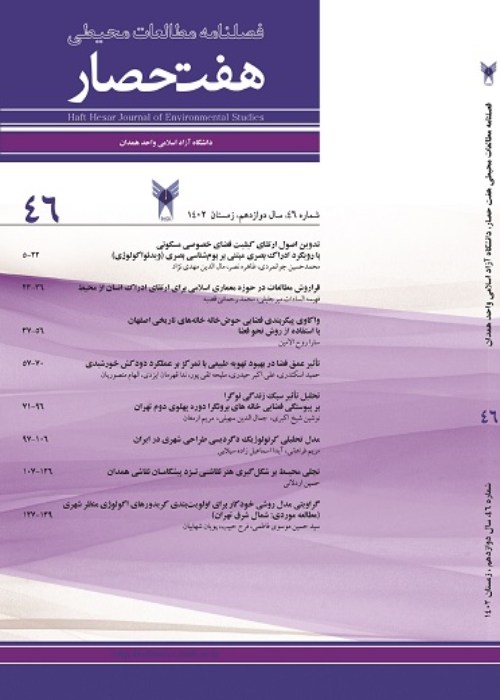Modeling causal relationships of school environmental components toreduce student aggression by mediating the role of diversity and activity
Aggressive behavior in various forms is one of society’s major and fundamental problems. The importance of this issue at the global level has led to proposals and solutions to reduce aggression. Environmental experts believe that the environment with its components can significantly impact mental health, behavioral stress, the sense of belonging to space, and the amount of social interactions of users. The onset of aggressive behavior in childhood will lead to serious social harm and threats in the future. Aggressive behavior is very concerning. Aggressive children are harmed in their relationships with family, peers, and teachers, and this behavior will affect their academic performance, concentration, and learning. For this reason, the identification of factors affecting this behavior has been the focus of mental health researchers and should be considered by the educational system. Thus, school is the most effective environment in which students, along with their friends and peers, can imitate aggressive behavior or they can behave relatively calmly and logically. The main purpose of this research to reduce such behaviors of students in schools is to achieve a model of optimal causal relationships between effective environmental components.
The research method is based on a survey to evaluate the environmental components that are affecting the reduction of aggressive behavior, which was extracted from the framework of theoretical foundations. A questionnaire was prepared and distributed among 317 male high school students. Data analysis is a method of factor analysis in which the relationship between environmental components is explained, and the final research model is drawn from Emus software. Also, causal relationships of the model are evaluated using path analysis.
In the findings of the research, the relationship model between the seven main factors of environmental components and students' aggression in schools has been drawn. These factors include the effect of a stress-free environment in establishing a sense of empathy among students, the effect of diversity in increasing spatial attractiveness, the effect of readability and accessibility on improving students' mental peace, the effect of naturalism on the formation of a fresh environment, the effect of privacy on increasing environmental security, and the effect of flexibility of environmental elements. In improving the performance and finally, the effect of furniture and diverse arrangement is on setting the activity of the environment. In the final model, three cycles of naturalistic factors impact the environment without stress. The first cycle, which expresses the role of nature along with the readability and flexibility of space, will lead to the movement of the second cycle with the addition of the diversity factor and then the third cycle with the activity factor.
The results indicate that the cycle of naturalism with the mediation of diversity at 39.8% and activity at 40.2% has led to the formation of a stress-free environment. Also, the spatial readability factor with 65.4%, and the environmental security factor with 50.2% were identified as the most effective factors in the model, and the final model was influenced by these two factors.
- حق عضویت دریافتی صرف حمایت از نشریات عضو و نگهداری، تکمیل و توسعه مگیران میشود.
- پرداخت حق اشتراک و دانلود مقالات اجازه بازنشر آن در سایر رسانههای چاپی و دیجیتال را به کاربر نمیدهد.


